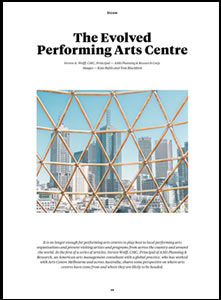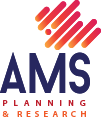In an article for Arts Centre Melbourne’s magazine, Encore, AMS Principal Steven A. Wolff details the evolution of “public value” among a particularly complex group of arts organizations: performing arts centers.
 Modern performing arts centers like Arts Centre Melbourne which officially opened in 1984 were relatively new concepts that dated back only to the 1960s. But now, they have become highly sophisticated businesses run by expert professional staff and guided by deeply engaged boards.
Modern performing arts centers like Arts Centre Melbourne which officially opened in 1984 were relatively new concepts that dated back only to the 1960s. But now, they have become highly sophisticated businesses run by expert professional staff and guided by deeply engaged boards.
A highly visible and complex enterprise, the contemporary performing arts center (PAC) is often one of the largest and most diverse arts organizations in a community. It is expected to be a leader in the arts sector and support civic priorities.
But, the environment in which performing arts centers operate is one of dramatic change. From rapidly changing and diversifying communities to universal on-demand access to content via the internet; from a new, more sophisticated definition of the marketplace and high customer expectations; who today’s “artists” are and new economic realities; it is no longer possible for a performing arts center simply to be what it once was envisioned to be, an “island of culture.”
Over the past sixty years, the PAC has evolved, in fits and starts, through four, possibly five, distinct generations:
Generation One – Arts Center as “Home”
While cities and their leaders have been building theaters throughout recorded history, the prototypical modern performing arts center, comprising a complex of several genre-specific performance spaces, dates only back to the 1960s and early 1970s with the development of New York’s Lincoln Center, London’s National Theatre and the Sydney Opera House.
These first modern performing arts centers created a nexus of activity largely targeted to the community’s elite. This strategy was about creating a “home” for the “high arts”; a place to see and be seen.
Generation Two – Arts Center as “Place”
By the late 1970s and early 1980s, these early PACs had demonstrated a valuable secondary effect – the density of activity and people (artists, artistic companies, audiences) that they created often resulted in secondary development (or redevelopment) in the surrounding neighborhood.
Cities around the world recognized that performing arts centers could drive activation or revitalization of their urban cores at a time when many residents and businesses were leaving for the suburbs. Planners and community leaders recognized the arts as a key anchor for city center vibrancy; breathing life into precincts through performances, the presence of artists and the support of their patrons.
Generation Three – The Community’s “Center”
The third evolution of PACs began in the early 1990s, as centers sought to carve out a broader, more organic role connected to the fabric of their community. They became nexuses of civic activity, interlocutors, incubators, meeting places and centers of discourse and learning. Their activities became about better community access, serving more children and families and bringing diverse communities together.
Generation Three centers often offer school-time performances, master classes, pre- and post-performance discussions, talent searches, scholarships, summer theatre camps and more – all strategies to create additional points of entry for the community. The goal was to make the PAC more accessible to a broader and more diverse community.
Click to download full article (PDF format)
Generation Four – Creativity and Innovation
The Generation Four PAC creates public value opportunity by making diverse programs accessible to diverse audiences. It provides critical support for high quality programs, enables innovation in the development of content and delivery, and provides essential support to emerging ideas of artistic expression.
The Generation Four PAC must also be nimble, provide a high level of technical and functional accommodation, look beyond its traditional performance venues and usual delivery mechanisms to meet its audiences where they want to engage and be able to take risk to supplement programs already present in the community.
A Generation Four PAC is a learning environment through which new experiences are generated and new knowledge is created that enhances cultural awareness, expression and understanding
Looking ahead, the successful Generation Four PAC will have many different roles, from home and host to thought leader and enabler among others, assuring that its particular community is served with the broadest possible arts and cultural opportunity that is relevant, authentic and in demand.

